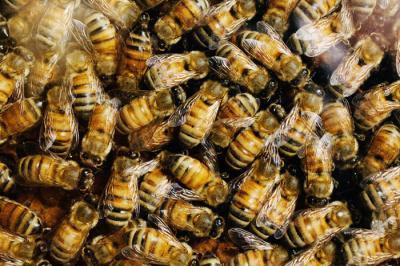Genome studies reveal causes of colony disorder disorder in bees
Earlier this week, researchers announced that they had found molecular markers of colony collapse disorder (CCD), which killed one-third of honey bees in the United States in the year. 2007-2008.
This is the first study to identify a specific molecular marker of this disorder, and hypothesize based on data to explain the mysterious disappearance of American bees. The team consists of scientists from the University of Illlinois and the US Department of Agriculture.
Researchers at the University of Illinois focused on the results of the honey bee genome project completed in October 2006, a month before the first reports of colony disorder (CCD) were published. .New research uses genome and chip gene results to find differences in gene expression in the gut of healthy honey bees and bees with CCD.
Chip genome analyzes usually identify only active genes - those that are copied into messenger RNA in the early stages of protein synthesis. But Reed Johnson, an entomologist at the University of Illinois, the lead author of the study, notes that these chips alter a large number of ribosome RNA (rRNA) segments in the bee's body. CCD. Ribosomes are protein-producing plants, but Johnson observed that this rRNA consists of adenosine-rich chains, which do not exist in normal ribosomes. The formation of a poly A tail is thought to be a signal of ribosome degeneration.
 The researchers found that bees lost in CCD have abnormally high numbers of ribosome fragments, a symptom of infection with the picorna family virus. (Photo: L. Brian Stauffer, Illinois University Bureau)
The researchers found that bees lost in CCD have abnormally high numbers of ribosome fragments, a symptom of infection with the picorna family virus. (Photo: L. Brian Stauffer, Illinois University Bureau)
"Chip genes for other animals also contain these mysterious rRNAs," said Gene Robinson, a professor of entomology. But comparisons between healthy bees and bees with CCD showed that rRNA fragments existed at a higher frequency in CCD bees.
'They exist a lot in CCD bees, significantly more,' says Berenbaum, another research scientist. 'An indication of CCD exists in all samples of bees collected at all times and space is the abundance of ribosome fragments.
When the team investigated pathogens in healthy bees and bees with CCD, they found that the viruses picorna "took over the ribosome," they controlled the cell engine to produce only proteins that serve the virus. The picorna virus that attacks bees is a long list, including an acute Israeli paralysis virus, a virus that has been suspected to be the main cause of CCD.
Scientists have come up with many different theories to determine the cause of CCD, from nutrient depletion to exposure to pesticides or exposure to genetically modified plants. Spanish researchers recently mentioned a parasitic fungus called Nosema ceranae, which also affects many CCD bees in Spain.
Loss of ribosome function will explain many phenomena surrounding CCD, Berenbaum said.
'If your ribosome is damaged, you can't react to pesticides, can't react to fungal or bacterial attacks and nutritional deficiencies, because ribosomes are the backbone of life in any what kind of creature. You always need protein to survive, ' she said.
The varroa mite, which is thought to have killed a lot of bees after accidentally invading the United States in 1986, is an intermediary that carries picorna viruses.
Robinson said these factors, along with the introduction of bees across regions to pollinate crops, are great pressures for bees. This burden will lead to damage to ribosome function.
- Decipher the mysterious life of honey bees
- The secret of bees
- The species of bees disappears, the species is extinct
- How to recognize killer bumblebees
- Prepare a bee sperm bank
- The researchers identified 15 new bees and bees
- The lemur genome fossils reveal the origin and evolution of HIV as well as other lentiviruses in primates
- Bees once fell into great extinction
- For the first time, Vietnam has successfully built the Vietnamese genome
- Find out the 'secret' to make honey bees into queen bees
- What do you know about bipolar disorder?
- Killer bees from Africa
 Why do potatoes have eyes?
Why do potatoes have eyes? 'Tragedy' the world's largest carnivorous life: Death becomes ... public toilet
'Tragedy' the world's largest carnivorous life: Death becomes ... public toilet Tomatoes were once considered 'poisonous' for 200 years
Tomatoes were once considered 'poisonous' for 200 years Detecting microscopic parasites on human face
Detecting microscopic parasites on human face